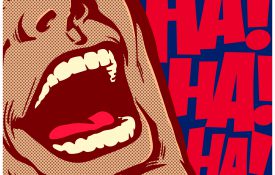-
The Shape of a Logo Has a Powerful Impact on Consumers
Companies have been known to spend millions of dollars designing their corporate logos – for good reason. A bad logo design can doom a brand. When the clothing retailer the Gap attempted to refresh its logo in 2010, the reaction from the public and the shareholders was harsh. One Harvard Business Review writer declared, “[T]he logo looks like something my pet hamster could cook up in PowerPoint.” But new research suggest that there’s more to a logo than its basic aesthetic appeal. The study, conducted by an international team of researchers, suggests that people make complex assessments of a company or product based merely on the shape of the logo.
-
Getting to Yes Is Easier Than Saying No
Over 100 million viewers tune in for the NFL’s championship Super Bowl game and musical Halftime Show. Historically, the NFL foots the bill for the musical entertainment; but in 2015 the NFL proposed that top talent like Katy Perry and Coldplay should instead pay them millions of dollars for the privilege of performing during the Super Bowl. Katy Perry and other performers universally refused the deal. After all, Perry already brings in millions from her concerts and record sales. Instead of holding out and demanding that Perry “pay to play,” the NFL eventually conceded, offering the popstar a prime spot as the halftime headliner, free of charge.
-
How to Become the Smartest Group in the Room
You’re a manager tasked with putting together a team to tackle a new project. What qualities do you look for in creating such a crack team? Research from psychological scientists Anita Williams Woolley (Carnegie Mellon University), Ishani Aggarwal (Fundação Getulio Vargas), and Thomas Malone (Massachusetts Institute of Technology) finds that the smartest groups don’t necessarily have the highest IQs – rather, what they do tend to have are excellent social skills.
-

The Energizing Effect of Humor
Humor may actually help people persevere in completing arduous tasks, researchers have found.
-
A New Way to Beat the Market: Invest in Workplace Wellness
In 1979, Jim Burke the chief executive of Johnson & Johnson started a state-of-the-art workplace wellness program in order to improve employee wellbeing and cut healthcare costs. The program’s goal was to make Johnson & Johnson employees “the healthiest in the world.” The expectation was that improving employees’ health and well-being would ultimately have a positive impact on the company's bottom line. It appears that Burke was onto something: A new study finds that companies that prioritize employee health also had significantly higher stock returns.
-

Employees Changed Their Drinking Habits After the Recession
If research on drinking in the wake of the Great Recession is any indication, financial insecurity has a strong influence on drinking habits.

